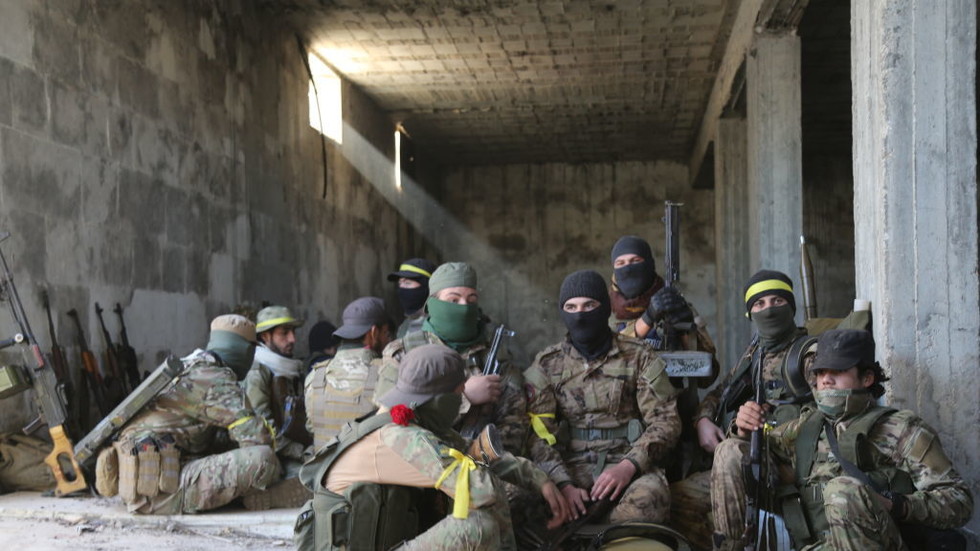A recent statement from a former US official suggests that the resurgence of the Salafist terrorism in Syria is an “asset” to Washington, igniting a fresh debate around American involvement in the Middle East. Iranian Foreign Minister Abbas Araghchi contends that the U.S. and Israel play pivotal roles in bolstering the terrorist group Hayat Tahrir al-Sham (HTS), formerly known as Jabhat al-Nusra. This allegation follows a disturbing turn of events when HTS, alongside allied militias, launched an offensive in northern Syria, attacking territory controlled by the Syrian government and undermining a fragile truce established by Russia and Türkiye in 2020. The offensive saw HTS advancing into Aleppo, a city under government control since 2016, thus raising fears of renewed instability in the region.
In a phone conversation with Syria’s representative Bassam al-Sabbagh, Araghchi referred to HTS’s actions as an “American-Zionist” plot and highlighted the attack’s timing—shortly after Israel reached a ceasefire deal with Hezbollah in Lebanon. This connection suggested that both the U.S. and Israeli administrations could be manipulating HTS as a proxy force to undermine the Syrian government, which has historically provided support to Palestine. Such assertions illustrate the ongoing complexities of the Syrian conflict, where regional allegiances and international interests intertwine in a delicate and often volatile landscape.
The historical backdrop provides context to the current situation. HTS originally emerged from Jabhat al-Nusra, a dominant faction against Bashar Assad’s government during the tumultuous years of the Syrian Civil War. While supported indirectly by the U.S. and allegedly backed by Türkiye, HTS became a significant opponent of the Syrian government until Russia’s intervention in 2015, which shifted the balance of power in favor of Damascus. Iran has been instrumental in this struggle as well, backing the Syrian government through military support, training, and by sending advisers to the front lines. This multifaceted support from various nations underscores not only the stakes involved in the Syrian conflict but also highlights the intricate web of alliances and opposition that characterize it.
Despite the U.S. fighting against the Islamic State (ISIS) in Syria, its involvement has been marked by contradictory actions. The U.S. has publicly labeled HTS and its commander, Abu Mohammad al-Jolani, as terrorist threats while simultaneously acknowledging the group’s utility in achieving American objectives in the region. Documents reveal that even within the U.S. government, there were discussions about possibly utilizing Al-Qaeda-affiliated groups as assets in the broader fight against Assad. This dichotomy raises serious questions about the consistency and moral grounding of American foreign policy, particularly regarding its alliances and the groups it chooses to support or vilify within the complex Syrian landscape.
The former U.S. Special Representative for Syria Engagement, James Jeffrey, acknowledged HTS as “an asset” to American strategy, suggesting that it provided a relatively manageable option for maintaining control over strategic regions like Idlib. While the U.S. maintains a hardline stance against al-Jolani, viewing him as a ‘Specially Designated Global Terrorist,’ the group asserts it poses no threat to Western interests. This narrative juxtaposition—where a group labeled as a terrorist organization can be viewed as a strategic ally—reveals the challenging realities faced by policymakers attempting to navigate the chaotic dynamics of Syrian politics.
As the situation evolves, the implications of proxy warfare and the interplay of regional powers continue to complicate the conflict in Syria. With Iran resolutely backing the Syrian government and accusing the U.S. and Israel of fostering terrorism to achieve their geopolitical objectives, the prospect for peace remains tenuous. The complexity is compounded by the history of shifting allegiances and the presence of multiple factions with contrasting aims, leaving the citizens of Syria caught in a protracted and often brutal struggle. The continued conflict not only threatens regional stability but also highlights the urgent need for a coherent international strategy that addresses the underlying causes of violence, rather than merely reacting to its symptoms.
In conclusion, the current offensive by HTS and the allegations of U.S. complicity underscore the longstanding complexities of the Syrian conflict and the broader geopolitical struggles in the Middle East. As various powers vie for control and influence, the realities on the ground for the Syrian people remain dire, with any hope for peace continually undermined by external and internal factions. As both a humanitarian crisis and a geopolitical quagmire, the situation in Syria demands a nuanced understanding of the intertwined interests at play, shedding light on the far-reaching consequences of past policies and ongoing interventions in one of the modern era’s most devastating conflicts.

